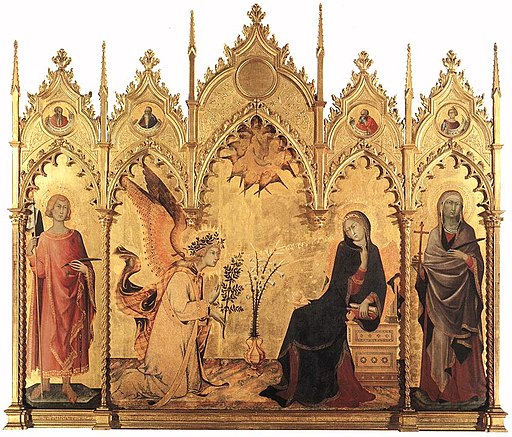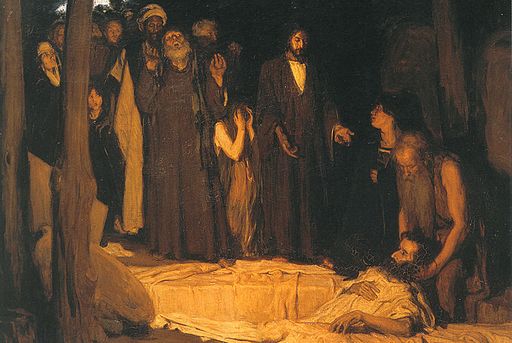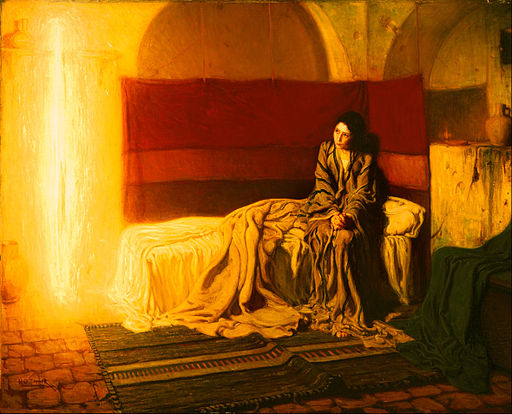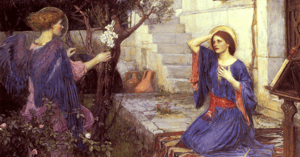From the beginning of time, there were whispers.
There was rumor even at the Fall, at the cracking of the world, when the face of God was hidden and the great rifting began.
But the rifting was an unfolding—a re-creation by means grinding and strenuous. A seer would later write, “The whole creation has been groaning . . . in the pains of childbirth until now” (Romans 8:22 [ESV]). The suffering of all the ages was the rumbling emergence of the Incarnate God.
All over the world, as souls struggled awake, hazy stories were told. Poets and mythmakers sang of gods coming down and taking mortal form. Or they sang of the gods’ children, born of miracle, who would save their people. Among the Jews, the prophet Isaiah saw that “a virgin [would] conceive and bear a son,” and he would be called “Emmanuel,” God with us (Isaiah 7:14).
The rumors became proclamation when a divine messenger approached a young Jewish woman named Mary. This episode has been dubbed “The Annunciation,” and it is one of the most popular images in the history of art.
Simone Martini’s Painted Annunciation
Among all the old, painted Annunciations, Simone Martini’s is perhaps the most celebrated. Working about seven hundred years ago, at the beginning of the Italian Renaissance, Martini conjured a Mary whose elegant bashfulness provoked much sympathy and admiration. Though her face is still that of an impassive Byzantine icon, her body twists and her neck tilts with demure and sinuous grace. Her long fingers, half-relaxed in surprise, awkwardly cradle a Scripture book. Opposite, the angel Gabriel humbly kneels, earnestly telling Mary to “be not afraid.”
 Simone Martini, Public Domain / via Wikimedia Commons
Simone Martini, Public Domain / via Wikimedia Commons
This was the first moment of decision, the first “altar call,” in Christian history. Would Mary assent to the infilling of the Holy Spirit, or would she decline? Would she open to the divine pressure, accept the divine gift? Would she do this obediently and without reservation, despite the risks? Certain risks were obvious: loss of her betrothed, shunning, condemnation. At the moment of the Annunciation, however, these particular dangers might have felt distant. Other risks were more pressing: risks to the body, the spirit, the emotions, as privacy and self-enclosure gave way to radical availability and surrender. It is this personal, existential risk that Martini captures so well in the twisting shoulders and upraised arm of his painted Mary. This is a girl who is being pressed into aching, stretching change.
Henry Ossawa Tanner’s Historical Take
More than five hundred years later, the African-American painter Henry Ossawa Tanner reimagined this familiar scene in a more rigorously historical light. The devout Tanner, whose father was a bishop in the African Methodist Episcopal Church, had become well-known as a painter of biblical scenes beginning in 1896 when his Resurrection of Lazarus created a sensation at the Paris Salon.
 Henry Ossawa Tanner, Public Domain / via Wikimedia Commons
Henry Ossawa Tanner, Public Domain / via Wikimedia Commons
On the heels of this success, and in search of greater empathy with his subjects, Tanner traveled to the Holy Land. His Annunciation was an early fruit of this sojourn, and it was like no other Annunciation ever painted in the history of art.
Here an olive-skinned girl, evidently young and frightened, shrinks into the corner of her bedroom, her hands nervously clasped. She is wearing a crumpled, tan robe, and she is surrounded by humble mud and brick. Opposite the girl, a vibrating column of light pulses with blinding, impossible splendor. This is the angel Gabriel—no longer a graceful courtier with falcon wings, but something stark and inhuman, like the “pure intelligence” of the medieval philosophers. (Early mystics and theologians maintained, of course, that angels have no finite bodies—though they can take on various appearances as they wish.) With its rod of light and its archaeological pointedness, Tanner’s Annunciation feels strikingly modern and even “sci-fi.” Here, the familiar Bible story is not a romantic dream, but a paranormal incursion of great strangeness and mystery.
 Henry Ossawa Tanner, Public Domain / via Wikimedia Commons
Henry Ossawa Tanner, Public Domain / via Wikimedia Commons
The artworld is one place where marginal figures have a certain advantage in the pursuit of excellence. Tanner, who was Black, the son of a slave, and an expatriate in Paris, could see things from “sideways” in a manner that more privileged artists could not. What is it like to be genuinely fearful? What is it like to feel life is precarious? What is it like to feel overpowered by something totally “other”—something utterly beyond one’s referential frame? Tanner knew these feelings better than most, and his Annunciation shows it. Though Tanner was a fifty-year-old man when he painted this picture, one feels that he is Mary—naïve and vulnerable. We all are. In Tanner’s painting, the first “altar call” in Christian history takes on a sense of existential peril at once recognizable and new.
The Holy Spirit Comes to the Open and Vulnerable
From the first great rifting, and the inauguration of re-creation, the Holy Spirit’s coming has been announced in myriad ways. It was announced through myth and prophecy, and then to Mary, with great specificity. Thirty-three years after the Annunciation event, the Spirit’s coming would be manifold, infilling not only the mother of Christ but everyone willing to receive it. This season, as we sing “O Come Emmanuel,” may we welcome the Spirit into the womb of our hearts, there to transform us into the new shapes set by our divine destiny.
Ekphrasis: The Annunciation
After Henry O. Tanner and Simone Martini
Squat in a house of baked mud,
Fat burns and hands crack, nimble,
Dutiful, back sweating and
Swaying; at once the rhythm
Is broken.Or, engrossed in vellum prayers,
Draped in Venetian brocades,
Resplendent, heart beating and
Bleeding; the words come alive,
The book drops.No temple recitation
Of ancient scrawlings told you
That home space is too like flesh -
Labyrinthine, familiar -
For painless penetration.And yet, "do not be afraid;"
Brown hands or book in crisis,
The new wine bursts the old skins.
Work, faith, dissolve in the flood
And desire becomes Presence.
Originally Published on Christian Scholar's Review
Read Also:
Advent Meditation I: St. Hildegard and the Cyclical Song of Angels

